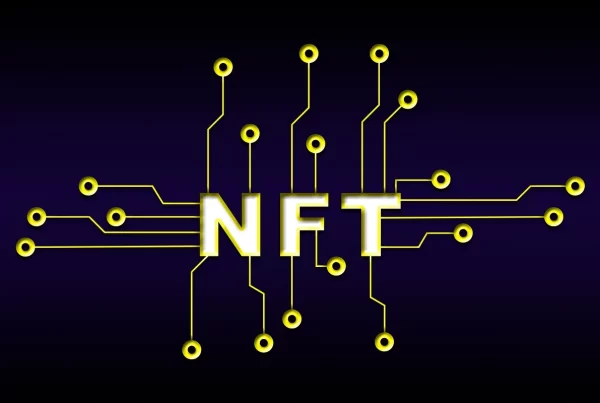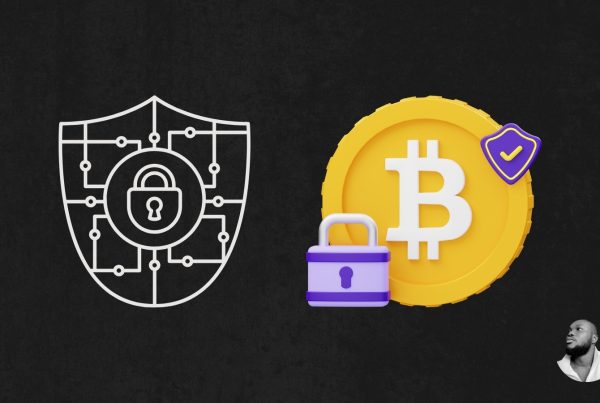Master Passive Income with DeFi 101
Decentralized Finance, or DeFi, represents a revolutionary shift in the financial landscape, offering individuals the opportunity to engage in financial activities without the need for traditional intermediaries like banks. “DeFi 101: How to Make Passive Income Using Decentralized Finance” serves as a comprehensive guide for those looking to explore this innovative sector and leverage its potential for generating passive income. By utilizing blockchain technology and smart contracts, DeFi platforms provide a range of financial services, including lending, borrowing, and yield farming, all of which can be accessed with greater transparency and efficiency. This introduction to DeFi will equip you with the foundational knowledge needed to navigate the DeFi ecosystem, understand its core components, and identify strategies to earn passive income, empowering you to take control of your financial future in a decentralized world.
Introduction To DeFi: Understanding The Basics Of Decentralized Finance
Decentralized Finance, commonly referred to as DeFi, represents a revolutionary shift in the financial landscape, offering a new way to engage with financial services without the need for traditional intermediaries like banks and financial institutions. At its core, DeFi leverages blockchain technology to create an open and permissionless financial ecosystem, where users can access a wide range of financial services, including lending, borrowing, trading, and earning interest, all in a decentralized manner. This innovative approach not only democratizes access to financial services but also introduces new opportunities for individuals to generate passive income.
To understand the basics of DeFi, it is essential to first grasp the underlying technology that powers it: blockchain. A blockchain is a distributed ledger that records transactions across a network of computers, ensuring transparency, security, and immutability. Ethereum, the most popular blockchain for DeFi applications, enables the creation of smart contracts—self-executing contracts with the terms of the agreement directly written into code. These smart contracts eliminate the need for intermediaries, allowing for peer-to-peer transactions and interactions.
One of the primary ways individuals can earn passive income through DeFi is by participating in liquidity provision. In traditional finance, liquidity is provided by banks and financial institutions. However, in DeFi, anyone can become a liquidity provider by supplying their assets to decentralized exchanges (DEXs) or liquidity pools. In return for providing liquidity, participants earn a share of the transaction fees generated by the platform. This process not only facilitates trading but also offers liquidity providers a steady stream of passive income.
Another popular method for generating passive income in DeFi is through yield farming, also known as liquidity mining. Yield farming involves lending or staking cryptocurrencies in DeFi protocols to earn rewards, often in the form of additional tokens. These rewards can be highly lucrative, especially during periods of high demand for specific tokens or services. However, it is important to note that yield farming can be complex and carries certain risks, such as impermanent loss and smart contract vulnerabilities. Therefore, potential yield farmers should conduct thorough research and consider their risk tolerance before participating.
Staking is another avenue for earning passive income in the DeFi space. Unlike yield farming, which often involves providing liquidity to various protocols, staking typically requires users to lock up their tokens in a specific blockchain network to support its operations, such as validating transactions. In return, stakers receive rewards, usually in the form of additional tokens. This process not only helps secure the network but also provides a relatively stable source of passive income for participants.
As the DeFi ecosystem continues to evolve, new opportunities for passive income generation are constantly emerging. Innovations such as decentralized insurance, synthetic assets, and algorithmic stablecoins are expanding the possibilities for users to engage with DeFi in novel ways. However, with these opportunities come inherent risks, including market volatility, regulatory uncertainty, and potential security vulnerabilities. Therefore, it is crucial for individuals interested in DeFi to stay informed, exercise caution, and adopt best practices for safeguarding their assets.
In conclusion, DeFi offers a transformative approach to financial services, empowering individuals to earn passive income through various decentralized mechanisms. By understanding the basics of DeFi and exploring its diverse opportunities, users can participate in this burgeoning financial ecosystem while navigating its challenges with informed decision-making. As the landscape of decentralized finance continues to grow, it holds the potential to redefine how we interact with money and financial services in the digital age.
Yield Farming: Maximizing Returns Through Liquidity Provision
In the rapidly evolving landscape of decentralized finance, or DeFi, yield farming has emerged as a prominent strategy for generating passive income. Yield farming, also known as liquidity mining, involves providing liquidity to decentralized exchanges or lending platforms in exchange for rewards. These rewards often come in the form of additional cryptocurrency tokens, which can significantly enhance the returns on one’s initial investment. As the DeFi ecosystem continues to expand, understanding the intricacies of yield farming becomes essential for those looking to maximize their returns through liquidity provision.
To begin with, yield farming operates on the principle of liquidity provision, which is crucial for the functioning of decentralized exchanges. These platforms rely on liquidity pools, which are essentially reserves of tokens that facilitate trading without the need for a traditional order book. By contributing to these pools, liquidity providers enable seamless transactions and, in return, earn a share of the transaction fees generated by the platform. This process not only supports the decentralized exchange but also offers liquidity providers an opportunity to earn passive income.
Moreover, yield farming often involves the use of automated market makers (AMMs), which are smart contracts that manage liquidity pools. AMMs determine the price of tokens within the pool based on the ratio of the tokens available. This mechanism allows for continuous trading and liquidity provision, even in the absence of a counterparty. As a result, liquidity providers can earn rewards in the form of governance tokens, which are native to the DeFi platform. These tokens can be held for potential appreciation, traded for other cryptocurrencies, or used to participate in the governance of the platform.
Transitioning to the risks associated with yield farming, it is important to note that while the potential for high returns is attractive, it is not without its challenges. One of the primary risks is impermanent loss, which occurs when the price of the tokens in the liquidity pool changes relative to when they were deposited. This can lead to a situation where the value of the tokens withdrawn is less than if they had simply been held in a wallet. Additionally, smart contract vulnerabilities pose a significant risk, as bugs or exploits can lead to the loss of funds. Therefore, participants must conduct thorough research and due diligence before engaging in yield farming activities.
Furthermore, the dynamic nature of the DeFi space means that yield farming strategies must be adaptable. As new platforms and protocols emerge, they often offer attractive incentives to attract liquidity providers. This creates a competitive environment where yield farmers must continuously evaluate and adjust their strategies to optimize returns. Staying informed about the latest developments and understanding the underlying mechanics of different platforms can provide a competitive edge in this fast-paced ecosystem.
In conclusion, yield farming represents a compelling opportunity for generating passive income through decentralized finance. By providing liquidity to decentralized exchanges and lending platforms, participants can earn rewards that enhance their overall returns. However, it is essential to be aware of the associated risks and to remain adaptable in the face of an ever-changing DeFi landscape. With careful consideration and strategic planning, yield farming can be a valuable addition to one’s investment portfolio, offering both financial rewards and a deeper engagement with the innovative world of decentralized finance.
Staking: Earning Passive Income By Supporting Blockchain Networks
Decentralized Finance, or DeFi, has emerged as a revolutionary force in the financial sector, offering individuals the opportunity to engage in financial activities without the need for traditional intermediaries. One of the most compelling aspects of DeFi is the ability to earn passive income through various mechanisms, with staking being a prominent method. Staking involves participating in the validation process of blockchain networks, thereby supporting their security and operations while earning rewards in return. This process not only contributes to the network’s integrity but also provides a steady stream of income for participants.
To understand staking, it is essential to grasp the concept of proof-of-stake (PoS), a consensus mechanism used by many blockchain networks. Unlike proof-of-work (PoW), which relies on computational power to validate transactions, PoS requires participants to hold and lock a certain amount of cryptocurrency in a wallet. This locked amount, known as a stake, acts as collateral, incentivizing validators to act honestly. In return for their participation, speakers receive rewards, typically in the form of additional cryptocurrency tokens. This system is designed to be more energy-efficient than PoW, making it an attractive option for both network developers and participants.
The process of staking begins with selecting a suitable blockchain network that supports PoS. Popular networks such as Ethereum 2.0, Cardano, and Polkadot offer staking opportunities, each with its own set of rules and reward structures. Once a network is chosen, the next step involves acquiring the network’s native cryptocurrency, which will be used as the stake. It is crucial to conduct thorough research on the network’s staking requirements, potential returns, and associated risks before committing funds.
After acquiring the necessary cryptocurrency, participants must decide whether to stake it independently or join a staking pool. Staking independently requires running a validator node, which can be technically demanding and may require a significant initial investment. On the other hand, staking pools allow individuals to combine their resources with others, thereby lowering the barrier to entry and reducing the technical burden. By joining a pool, participants can earn rewards proportional to their contribution without the need to manage a node themselves.
Once the staking process is initiated, participants can begin earning rewards. These rewards are typically distributed at regular intervals, depending on the network’s protocol. It is important to note that while staking can provide a reliable source of passive income, it is not without risks. The value of the staked cryptocurrency can fluctuate, affecting the overall returns. Additionally, some networks impose penalties for dishonest behaviour or prolonged inactivity, which can result in a reduction of the staked amount.
In conclusion, staking offers a promising avenue for earning passive income within the DeFi ecosystem. By supporting blockchain networks through the PoS mechanism, participants can contribute to the security and efficiency of these networks while reaping financial rewards. However, as with any investment, it is essential to conduct thorough research and understand the associated risks before engaging in staking activities. As the DeFi landscape continues to evolve, staking remains a vital component, providing both opportunities and challenges for those seeking to harness the potential of decentralized finance.
Lending And Borrowing: Generating Interest Through DeFi Platforms
Decentralized Finance, or DeFi, has emerged as a revolutionary force in the financial sector, offering individuals the opportunity to engage in financial activities without the need for traditional intermediaries. One of the most compelling aspects of DeFi is its potential to generate passive income through lending and borrowing on decentralized platforms. By leveraging blockchain technology, these platforms provide a transparent, secure, and efficient way to earn interest on digital assets.
To begin with, DeFi platforms facilitate lending and borrowing by utilizing smart contracts, which are self-executing contracts with the terms of the agreement directly written into code. This eliminates the need for a central authority, thereby reducing costs and increasing accessibility. Users can lend their digital assets to others in exchange for interest, which is typically higher than what traditional banks offer. This is primarily because DeFi platforms operate on a global scale, allowing for a larger pool of borrowers and lenders, which in turn leads to more competitive interest rates.
Moreover, the process of lending on DeFi platforms is relatively straightforward. Users deposit their digital assets into a lending pool, which is then made available to borrowers. In return, lenders receive interest payments, often in the form of the same cryptocurrency they deposited or in a platform-specific token. This interest is generated from the fees paid by borrowers, who are required to provide collateral that exceeds the value of the loan, thereby mitigating the risk of default. This over-collateralization is a key feature of DeFi lending, ensuring that lenders are protected even in volatile market conditions.
In addition to earning interest, lenders can benefit from the appreciation of the platform’s native tokens. Many DeFi platforms incentivize participation by distributing governance tokens to users, which can increase in value as the platform grows in popularity and usage. These tokens often grant holders voting rights on platform decisions, further aligning the interests of users with the success of the platform.
On the borrowing side, DeFi platforms offer users the ability to access liquidity without selling their assets. This can be particularly advantageous for individuals who wish to maintain their investment positions while still needing funds for other purposes. By using their digital assets as collateral, borrowers can obtain loans in various cryptocurrencies, which can then be used for trading, investing, or other financial activities. The interest rates for borrowing are typically determined algorithmically, based on supply and demand dynamics within the platform.
However, it is important to note that participating in DeFi lending and borrowing is not without risks. The volatility of cryptocurrency prices can affect the value of collateral, potentially leading to liquidation if the value falls below a certain threshold. Additionally, smart contract vulnerabilities and platform security are critical considerations, as they can lead to loss of funds. Therefore, it is essential for users to conduct thorough research and due diligence before engaging with any DeFi platform.
In conclusion, DeFi platforms offer a promising avenue for generating passive income through lending and borrowing. By providing a decentralized, transparent, and efficient alternative to traditional financial systems, they empower individuals to take control of their financial future. As the DeFi ecosystem continues to evolve, it is likely that we will see even more innovative solutions and opportunities for passive income generation in the years to come.
Risk Management In DeFi: Safeguarding Your Investments In A Decentralized World
In the rapidly evolving landscape of decentralized finance (DeFi), the allure of generating passive income has captivated the attention of investors worldwide. However, as with any financial endeavour, the potential for reward is accompanied by inherent risks. Understanding and managing these risks is crucial for safeguarding your investments in the decentralized world. As DeFi platforms operate without traditional intermediaries, they offer unprecedented opportunities for financial growth, yet they also expose investors to unique vulnerabilities. Therefore, a comprehensive approach to risk management is essential for anyone looking to navigate this innovative financial ecosystem.
To begin with, smart contract risk is one of the most significant concerns in DeFi. Smart contracts, which are self-executing contracts with the terms of the agreement directly written into code, are the backbone of DeFi applications. While they offer automation and efficiency, they are not immune to bugs or vulnerabilities. A single flaw in the code can lead to significant financial losses, as has been demonstrated by numerous high-profile hacks and exploits. To mitigate this risk, investors should prioritize platforms that have undergone rigorous security audits by reputable firms. Additionally, diversifying investments across multiple platforms can reduce the impact of a potential smart contract failure.
Another critical aspect of risk management in DeFi is understanding liquidity risk. DeFi platforms rely on liquidity pools to facilitate transactions, and the availability of liquidity can fluctuate significantly. In times of market stress, liquidity can dry up, leading to slippage and unfavourable trading conditions. To protect against liquidity risk, investors should consider the size and activity of the liquidity pools they engage with. Larger, more active pools are generally more stable and less susceptible to sudden liquidity shortages. Furthermore, keeping abreast of market conditions and being prepared to adjust strategies accordingly can help mitigate the impact of liquidity fluctuations.
Market risk is also a prominent factor in DeFi, as the value of digital assets can be highly volatile. The decentralized nature of DeFi means that traditional financial safeguards, such as government-backed insurance, are not available. Consequently, investors must be prepared for the possibility of significant price swings. Employing strategies such as dollar-cost averaging, which involves investing a fixed amount at regular intervals, can help smooth out the effects of market volatility. Additionally, setting stop-loss orders can provide a safety net by automatically selling assets if their price falls below a predetermined level.
Moreover, regulatory risk is an emerging concern in the DeFi space. As governments and regulatory bodies around the world grapple with the implications of decentralized finance, new regulations could impact the operation and profitability of DeFi platforms. Staying informed about regulatory developments and understanding the legal landscape in your jurisdiction is crucial for managing this risk. Engaging with platforms that demonstrate a commitment to compliance and transparency can also provide an added layer of security.
In conclusion, while DeFi offers exciting opportunities for passive income, it is imperative to approach this space with a robust risk management strategy. By understanding and addressing smart contract, liquidity, market, and regulatory risks, investors can better safeguard their investments in the decentralized world. As the DeFi ecosystem continues to mature, those who prioritize risk management will be well-positioned to capitalize on its potential while minimizing exposure to its inherent uncertainties.
Q&A
1. What is DeFi?
Decentralized Finance (DeFi) refers to a financial ecosystem built on blockchain technology, primarily Ethereum, that offers traditional financial services like lending, borrowing, and trading without intermediaries.
2. How can you earn passive income through DeFi?
You can earn passive income in DeFi by providing liquidity to decentralized exchanges, participating in yield farming, staking cryptocurrencies, or lending assets on DeFi platforms.
3. What is yield farming?
Yield farming involves providing liquidity to DeFi protocols and earning rewards, often in the form of additional tokens, for your participation and risk.
4. What are liquidity pools?
Liquidity pools are smart contracts that hold funds and enable decentralized trading by allowing users to swap tokens directly, with liquidity providers earning a share of the transaction fees.
5. What are the risks associated with DeFi?
DeFi risks include smart contract vulnerabilities, impermanent loss, market volatility, and potential regulatory changes, which can affect the value and security of your investments.
Conclusion
Decentralized Finance (DeFi) offers a transformative approach to generating passive income by leveraging blockchain technology to eliminate intermediaries and provide users with direct access to financial services. Through various DeFi protocols, individuals can earn passive income by participating in activities such as yield farming, staking, and lending. Yield farming involves providing liquidity to decentralized exchanges in exchange for rewards, while staking allows users to earn interest by holding and supporting a blockchain network. Lending platforms enable users to earn interest by loaning their cryptocurrencies to others. Despite the potential for high returns, DeFi carries inherent risks, including smart contract vulnerabilities, market volatility, and regulatory uncertainties. Therefore, participants must conduct thorough research, understand the risks involved, and employ risk management strategies. Overall, DeFi presents a promising avenue for passive income, democratizing access to financial opportunities and fostering innovation in the financial sector.
2 Crypto Projects to Invest 📈
Join 17,000+ Subscribers to get a weekly selection of 2 Crypto Projects suitable for investment, including Market Analysis.



